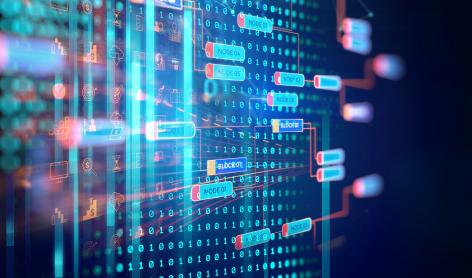A future boosted by Artificial Intelligence
In the movie “Her” (Her, Spike Jonze, 2013), the protagonist Theodore Twombly (Joaquin Phoenix), lonely after a breakup, acquires a revolutionary new virtual assistant, who is able to interact with humans if he were one himself. The production chronicles Theodore's relationship with the virtual assistant, called Samantha (Scarlett Johansson), who evolves and learns from each interaction with Theodore and the world presented to her.
Samantha's evolution process is known as Machine Learning, one of the foundations of what we call Artificial Intelligence. It is the ability of a computer program to learn and even make decisions without being explicitly programmed. In every new interaction, Samantha's knowledge base is increased, which helps her to make increasingly sophisticated decisions.
It is hard to predict how far or near we are from the release of a virtual assistant like Samantha, but applications that use machine learning and Artificial Intelligence are evolving rapidly and are already part of our daily lives.
Banks, mobile operators, and retail companies have been introducing to us to their new customer service tools: virtual assistants who learn from every interaction with their customers. The logic is similar to what we saw in “Her”, each new interaction with an audience feeds a knowledge base that will be used to assist decision making in future interactions.
At Rede Nacional de Ensino e Pesquisa (RNP), we are fostering Artificial Intelligence Research and Development (R&D) initiatives. An example is the TeleDIAC project – AI System for Cataract Diagnosis, which is being developed by a team of researchers from Universidade Federal do Rio Grande do Sul (UFRGS). This initiative, along with five others, was selected to participate in the Artificial Intelligence Challenge released by RNP in partnership with Microsoft.
The project is born within another innovative initiative: the Teleoftalmo program, which allows ophthalmic examinations in patients from the Brazilian Unified Health System (SUS) through its own video-collaboration tool, with real-time interaction between doctors and patients in totally remote centers, which increases the capillarity of care.
The goal of TeleDIAC is to assist in cataracts diagnosis using Artificial Intelligence, which will speed up the process of identifying the disease and reduce costs and time of care, two issues of SUS.
Based on an already diagnosed exam base, it is possible to generate an identification pattern by “training” a computer program to classify new exams and support the ophthalmologist in the diagnosis. Also, with each new exam classified and with a report confirmed by the ophthalmologist, the knowledge base is increased, improving the accuracy of program diagnosis.
In the coming years, we will see Artificial Intelligence changing the way we perform many of our professional and personal activities. And, like all new technology, questions on the paths that will be taken from its application will be frequently and even welcomed.
Our mission at RNP is to encourage new ideas on networking platforms and possible technology news to broaden everyone's knowledge. Also, it is important to see good examples emerging from our initiatives to show the positive impact Artificial Intelligence can bring us.
By Rafael Valle*
* Rafael Valle is the Research and Development coordinator of RNP.
